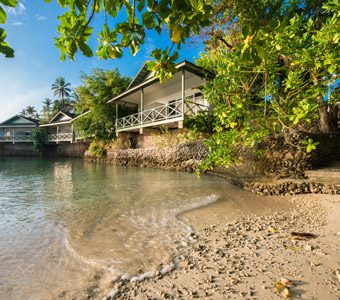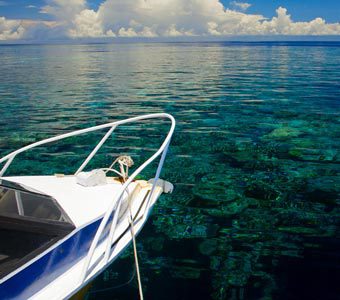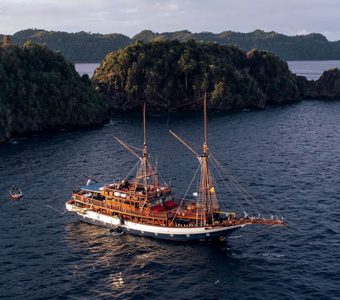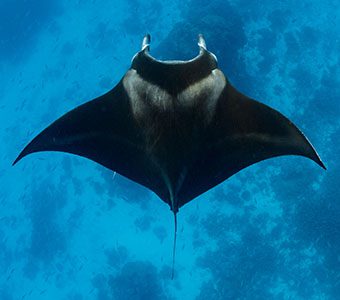Epaulette sharks are a member of the bamboo shark family, Hemiscylliidae, and while they have the same fin shape and arrangement as the bamboo sharks, they are much more colourful and have long slender bodies so they can wriggle into tight crevices. Nocturnal feeders, when looking for prey epaulette sharks do something that no other shark does, they walk across the bottom on their fins, which has led to them also being called ‘walking sharks’.
I have been fascinated by sharks from an early age and one of the first sharks I ever encountered close-up was the Epaulette Shark (Hemiscyllium ocellatum). This was the first member of the family described by scientists and is the most common member of the family found in northern Australia, especially on the Great Barrier Reef.
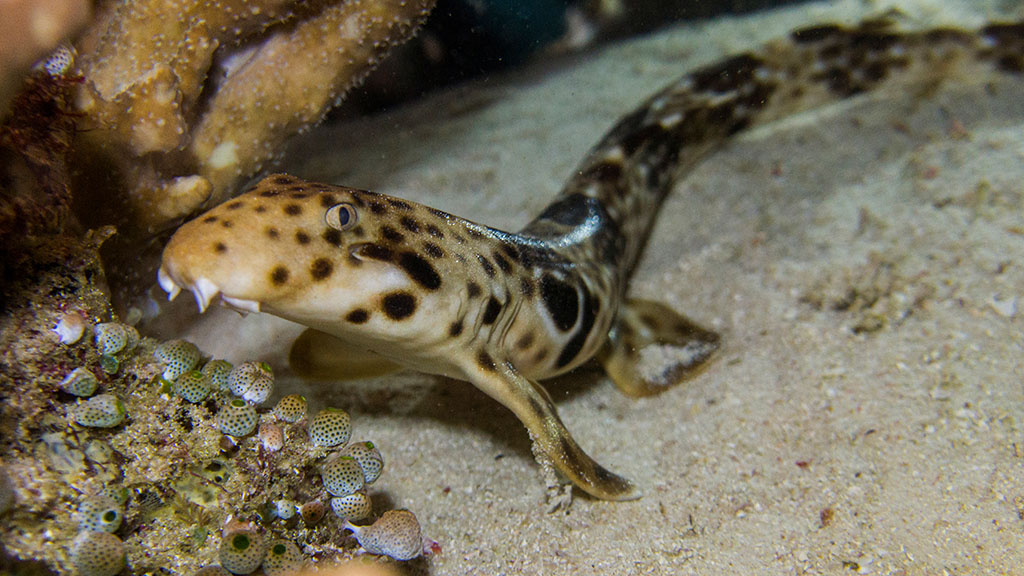
I encountered my first Epaulette Sharks at Heron Island when I was thirteen years old. Snorkeling over the reef flats, where they are most commonly found, I managed to see several hidden amongst the coral, and was lucky enough to even see one out in the open walking across the bottom.
Staying at the Heron Research Station on that trip, I was fortunate to meet Perry Gilbert, a famous American shark researcher who was studying the Epaulette Shark and its ability to remain out of water for hours if trapped by the tide. He could see I was very enthusiastic about sharks, so asked me to catch a few Epaulette Sharks for his research. This sounded like fun, but was a lot harder than expected, as this species can grow to 107cm in length and they are surprisingly strong. Extracting them from their coral hideout was very difficult, and I only managed to catch two. The others either swam off or disappeared deeper under the coral.
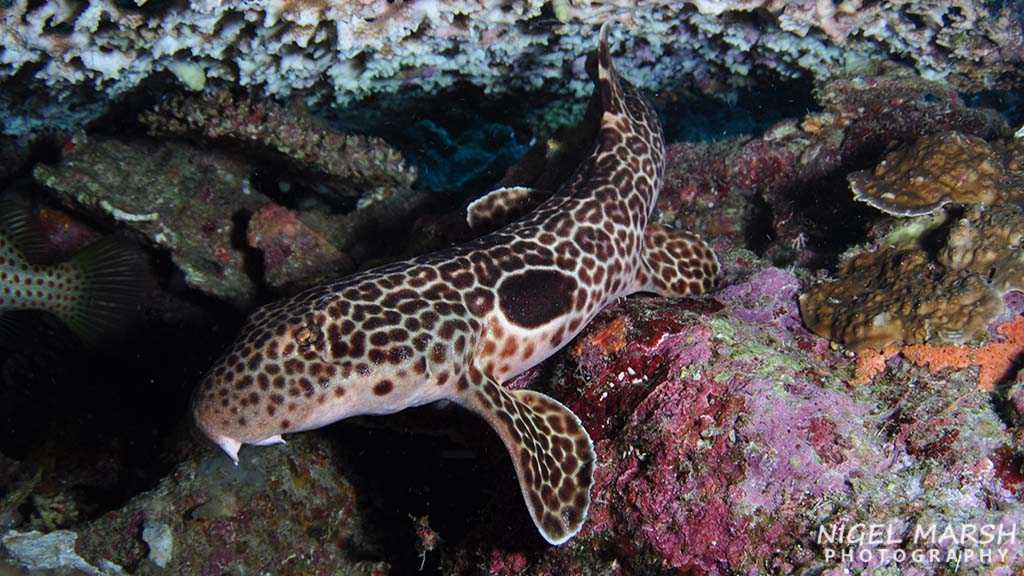
Epaulette sharks generally feed on crustaceans, small fish and worms, so have tiny teeth. But they can still bite, as I found out. Grabbing one shark it whipped around and bite me on the back of the hand. It wasn’t much of an injury, it didn’t even leave a scar that I can show off, but it is still the only shark bite I have sustained in over forty years of diving with sharks.
The following year I returned to Heron Island, and once again I was keen to see Epaulette Sharks. One day I was snorkeling along the reef edge, in deeper water than the sharks are normally found, so I was very surprised to see two Epaulette Sharks out in the open and having a fight. I wasn’t until I got closer that I realized that they were not fighting, but mating, the male twisted around the female with a clasper inserted into her cloaca. I only got to watch them mate for a few seconds before they parted and swam off. I didn’t realize at the time how rare this encounter was, I have never seen mating sharks since.
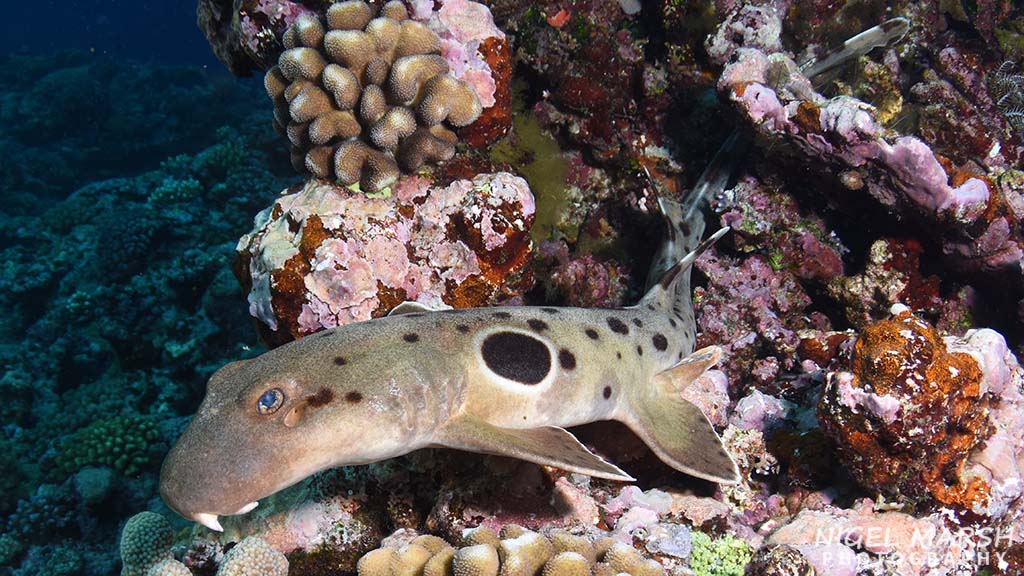
Epaulette Sharks lay eggs, which are small leather-like capsules. The female lays two eggs at a time, every two weeks, between August and December. Unfortunately, most are eaten by other marine life, but the ones that survive hatch around 120 days later, with the young sharks only 14cm long. It is quite common to see Epaulette Shark eggs on the Great Barrier Reef, but young sharks are never seen.
Another member of this family is also found in Australia, the Speckled Epaulette Shark (Hemiscyllium trispeculare). This species is reported to live over the same range as the Epaulette Shark, but are rarely seen. One place they do see them is Ningaloo Reef. However, when I dived this wonderful reef off Western Australia, I didn’t see one, mainly because I didn’t get a chance to do a night dive.
A number of epaulette sharks are also found in Papua New Guinea and Indonesia, and until recently there was only thought to be five species in the family. However, over the last decade several new species have been discovered and the family now contains nine species.
Over the years I have done four trips to Papua New Guinea, and each time I look for epaulette sharks. The most common and widespread species is the Papuan Epaulette Shark (Hemiscyllium hallstromi). This species is often seen off Port Moresby, and I have seen a few on night dives when staying at Loloata Island. But they are shy and elusive, and each one I have seen has quickly disappeared into a hole before I could get close to study or photograph them.
I had more luck with another PNG species, the Leopard Epaulette Shark (Hemiscyllium michaeli). This is one of the recently described species, as for many years it was confused with other species. The Leopard Epaulette Shark is reported to be common in Milne Bay, but the only one I have ever seen was off Tufi. I hadn’t really expected to see one in this area, so didn’t do any special night dives looking for them. So was pleasantly surprised when we found one resting under a plate coral by day. True to form, I only managed two quick photos of this beautifully pattern shark before it disappeared into a hole.
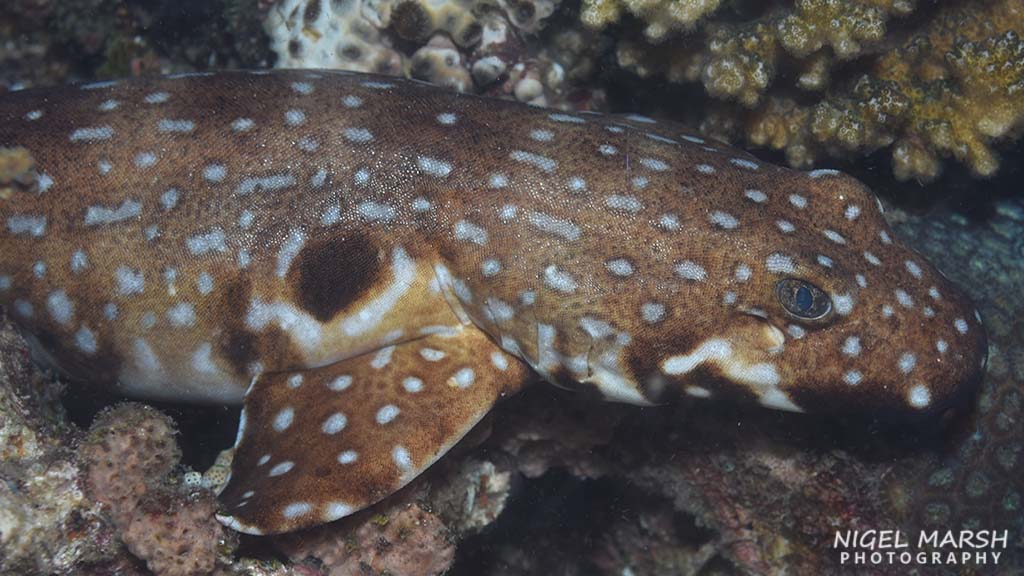
A third species found in PNG is the Hooded Epaulette Shark (Hemiscyllium strahani). This species is most commonly found in the Madang area, and was the main reason I visited Madang last year. I thought it would be difficult to see one, but the dive guides at Niugini Diving Adventures informed me they see around six on every night dive at their special dive site. The only problem was they couldn’t visit this site anymore, due to an ownership dispute between two villages.
We tried a new night dive site to search for one of these pretty little sharks, a coral reef only 2m to 9m, and I was very surprised to see almost a dozen Hooded Epaulette Sharks. Most were shy of our lights, and quickly hid away in the coral, but a few were happy to walk across the bottom in a search for prey as we watched and photographed them.
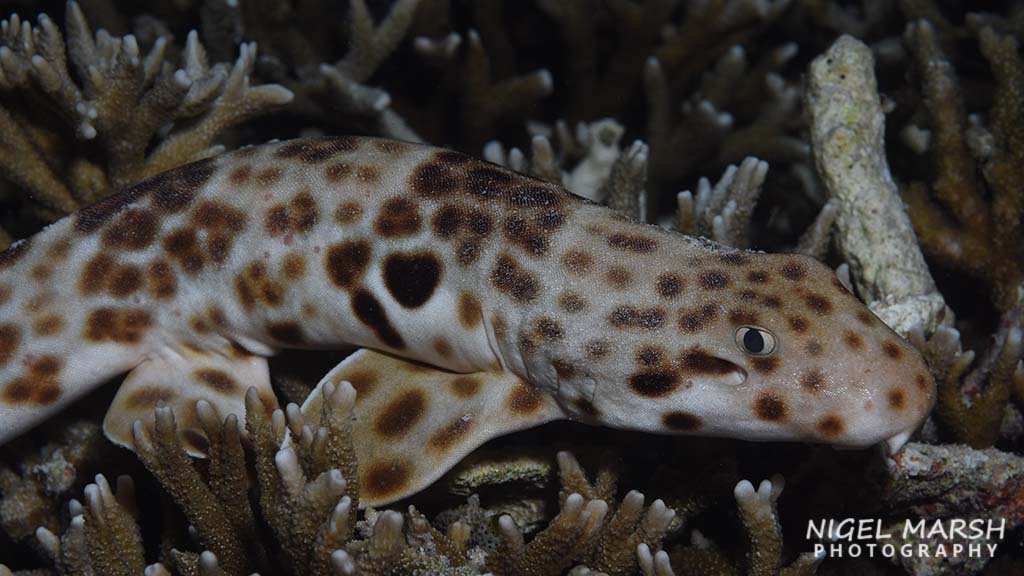
The Raja Ampat Epaulette Shark (Hemiscyllium freycineti) is the most common epaulette shark in eastern Indonesia and is also known as the Indonesian Speckled Carpetshark. On my first trip to Raja Ampat with Sea Safari Cruises I was impressed by the vast schools of fish and beautiful corals, but the thing I most wanted to see was this cute little shark. To see one my guide suggested a night dive at Airborek Jetty. While most of the group explored under the jetty, we headed into the shallows, only one to two metres deep, to look for a Raja Ampat Epaulette Shark. Fortunately, it didn’t take long, and we ended up finding four sharks walking over the coral.
The other three epaulette shark species found in Indonesia have only recently been described, and all have a very limited range. The Cenderwasih Epaulette Shark (Hemiscyllium galei) is only found in the Cenderwasih Bay area, which is more famous for its whale sharks. The Halmahera Epaulette Shark (Hemiscyllium halmahera) is only found off Halmahera. While the Triton Epaulette Shark (Hemiscyllium henryi) is only known from Triton Bay off West Papua. I have yet to go looking for these epaulette shark species.
I have seen thousands of sharks in my dive travels around the planet, and while I love seeing the large and potentially dangerous species, the wonderful little walking sharks, the epaulette sharks, will always be one of my favourites.
If you want to see epaulette sharks these are the best places to visit:
- The Epaulette Shark is common on the reef flats at Lady Elliot Island and Heron Island.
- Head to Port Moresby for a dive with Pro Dive PNG to see the Papuan Epaulette Shark. Contact us for more information.
- Leopard epaulette sharks can be found diving at Tawali Resort in Milne Bay and Tufi Resort. Milne Bay can be dived by liveaboard on the MV Chertan, while the MV Oceania also visits in February each year.
- Stay at Madang Resort to see the Hooded Epaulette.
- Sea Safari 8 is one of many liveaboards operating in Raja Ampat and their guides know all the best spots to see the Raja Ampat Epaulette Shark.

